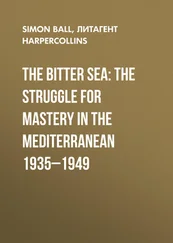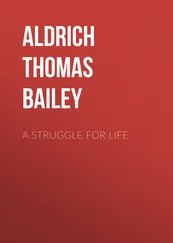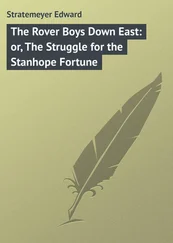Чарльз Дарвин - The Origin of Species by Means of Natural Selection Or, the Preservation of Favoured Races in the Struggle for Life
Здесь есть возможность читать онлайн «Чарльз Дарвин - The Origin of Species by Means of Natural Selection Or, the Preservation of Favoured Races in the Struggle for Life» весь текст электронной книги совершенно бесплатно (целиком полную версию без сокращений). В некоторых случаях можно слушать аудио, скачать через торрент в формате fb2 и присутствует краткое содержание. Год выпуска: 1999, Жанр: Биология, на английском языке. Описание произведения, (предисловие) а так же отзывы посетителей доступны на портале библиотеки ЛибКат.
- Название:The Origin of Species by Means of Natural Selection Or, the Preservation of Favoured Races in the Struggle for Life
- Автор:
- Жанр:
- Год:1999
- ISBN:нет данных
- Рейтинг книги:3 / 5. Голосов: 1
-
Избранное:Добавить в избранное
- Отзывы:
-
Ваша оценка:
- 60
- 1
- 2
- 3
- 4
- 5
The Origin of Species by Means of Natural Selection Or, the Preservation of Favoured Races in the Struggle for Life: краткое содержание, описание и аннотация
Предлагаем к чтению аннотацию, описание, краткое содержание или предисловие (зависит от того, что написал сам автор книги «The Origin of Species by Means of Natural Selection Or, the Preservation of Favoured Races in the Struggle for Life»). Если вы не нашли необходимую информацию о книге — напишите в комментариях, мы постараемся отыскать её.
The Origin of Species by Means of Natural Selection Or, the Preservation of Favoured Races in the Struggle for Life — читать онлайн бесплатно полную книгу (весь текст) целиком
Ниже представлен текст книги, разбитый по страницам. Система сохранения места последней прочитанной страницы, позволяет с удобством читать онлайн бесплатно книгу «The Origin of Species by Means of Natural Selection Or, the Preservation of Favoured Races in the Struggle for Life», без необходимости каждый раз заново искать на чём Вы остановились. Поставьте закладку, и сможете в любой момент перейти на страницу, на которой закончили чтение.
Интервал:
Закладка:
As with birds the individuals of the same species, inhabiting the same country, vary extremely little, I have particularly attended to them; and the rule certainly seems to hold good in this class. I cannot make out that it applies to plants, and this would have seriously shaken my belief in its truth, had not the great variability in plants made it particularly difficult to compare their relative degrees of variability.
When we see any part or organ developed in a remarkable degree or manner in a species, the fair presumption is that it is of high importance to that species: nevertheless it is in this case eminently liable to variation. Why should this be so? On the view that each species has been independently created, with all its parts as we now see them, I can see no explanation. But on the view that groups of species are descended from some other species, and have been modified through natural selection, I think we can obtain some light. First let me make some preliminary remarks. If, in our domestic animals, any part or the whole animal be neglected, and no selection be applied, that part (for instance, the comb in the Dorking fowl) or the whole breed will cease to have a uniform character: and the breed may be said to be degenerating. In rudimentary organs, and in those which have been but little specialised for any particular purpose, and perhaps in polymorphic groups, we see a nearly parallel case; for in such cases natural selection either has not or cannot come into full play, and thus the organisation is left in a fluctuating condition. But what here more particularly concerns us is, that those points in our domestic animals, which at the present time are undergoing rapid change by continued selection, are also eminently liable to variation. Look at the individuals of the same breed of the pigeon; and see what a prodigious amount of difference there is in the beak of tumblers, in the beak and wattle of carriers, in the carriage and tail of fantails, etc., these being the points now mainly attended to by English fanciers. Even in the same sub-breed, as in that of the short-faced tumbler, it is notoriously difficult to breed nearly perfect birds, many departing widely from the standard. There may truly be said to be a constant struggle going on between, on the one hand, the tendency to reversion to a less perfect state, as well as an innate tendency to new variations, and, on the other hand, the power of steady selection to keep the breed true. In the long run selection gains the day, and we do not expect to fail so completely as to breed a bird as coarse as a common tumbler pigeon from a good short-faced strain. But as long as selection is rapidly going on, much variability in the parts undergoing modification may always be expected.
Now let us turn to nature. When a part has been developed in an extraordinary manner in any one species, compared with the other species of the same genus, we may conclude that this part has undergone an extraordinary amount of modification since the period when the several species branched off from the common progenitor of the genus. This period will seldom be remote in any extreme degree, as species rarely endure for more than one geological period. An extraordinary amount of modification implies an unusually large and long-continued amount of variability, which has continually been accumulated by natural selection for the benefit of the species. But as the variability of the extraordinarily developed part or organ has been so great and long-continued within a period not excessively remote, we might, as a general rule, still expect to find more variability in such parts than in other parts of the organisation which have remained for a much longer period nearly constant. And this, I am convinced, is the case. That the struggle between natural selection on the one hand, and the tendency to reversion and variability on the other hand, will in the course of time cease; and that the most abnormally developed organs may be made constant, I see no reason to doubt. Hence, when an organ, however abnormal it may be, has been transmitted in approximately the same condition to many modified descendants, as in the case of the wing of the bat, it must have existed, according to our theory, for an immense period in nearly the same state; and thus it has come not to be more variable than any other structure. It is only in those cases in which the modification has been comparatively recent and extraordinarily great that we ought to find the GENERATIVE VARIABILITY, as it may be called, still present in a high degree. For in this case the variability will seldom as yet have been fixed by the continued selection of the individuals varying in the required manner and degree, and by the continued rejection of those tending to revert to a former and less modified condition.
SPECIFIC CHARACTERS MORE VARIABLE THAN GENERIC CHARACTERS.
The principle discussed under the last heading may be applied to our present subject. It is notorious that specific characters are more variable than generic. To explain by a simple example what is meant: if in a large genus of plants some species had blue flowers and some had red, the colour would be only a specific character, and no one would be surprised at one of the blue species varying into red, or conversely; but if all the species had blue flowers, the colour would become a generic character, and its variation would be a more unusual circumstance. I have chosen this example because the explanation which most naturalists would advance is not here applicable, namely, that specific characters are more variable than generic, because they are taken from parts of less physiological importance than those commonly used for classing genera. I believe this explanation is partly, yet only indirectly, true; I shall, however, have to return to this point in the chapter on Classification. It would be almost superfluous to adduce evidence in support of the statement, that ordinary specific characters are more variable than generic; but with respect to important characters, I have repeatedly noticed in works on natural history, that when an author remarks with surprise that some important organ or part, which is generally very constant throughout a large group of species, DIFFERS considerably in closely-allied species, it is often VARIABLE in the individuals of the same species. And this fact shows that a character, which is generally of generic value, when it sinks in value and becomes only of specific value, often becomes variable, though its physiological importance may remain the same. Something of the same kind applies to monstrosities: at least Is. Geoffroy St. Hilaire apparently entertains no doubt, that the more an organ normally differs in the different species of the same group, the more subject it is to anomalies in the individuals.
On the ordinary view of each species having been independently created, why should that part of the structure, which differs from the same part in other independently created species of the same genus, be more variable than those parts which are closely alike in the several species? I do not see that any explanation can be given. But on the view that species are only strongly marked and fixed varieties, we might expect often to find them still continuing to vary in those parts of their structure which have varied within a moderately recent period, and which have thus come to differ. Or to state the case in another manner: the points in which all the species of a genus resemble each other, and in which they differ from allied genera, are called generic characters; and these characters may be attributed to inheritance from a common progenitor, for it can rarely have happened that natural selection will have modified several distinct species, fitted to more or less widely different habits, in exactly the same manner: and as these so-called generic characters have been inherited from before the period when the several species first branched off from their common progenitor, and subsequently have not varied or come to differ in any degree, or only in a slight degree, it is not probable that they should vary at the present day. On the other hand, the points in which species differ from other species of the same genus are called specific characters; and as these specific characters have varied and come to differ since the period when the species branched off from a common progenitor, it is probable that they should still often be in some degree variable—at least more variable than those parts of the organisation which have for a very long period remained constant.
Читать дальшеИнтервал:
Закладка:
Похожие книги на «The Origin of Species by Means of Natural Selection Or, the Preservation of Favoured Races in the Struggle for Life»
Представляем Вашему вниманию похожие книги на «The Origin of Species by Means of Natural Selection Or, the Preservation of Favoured Races in the Struggle for Life» списком для выбора. Мы отобрали схожую по названию и смыслу литературу в надежде предоставить читателям больше вариантов отыскать новые, интересные, ещё непрочитанные произведения.
Обсуждение, отзывы о книге «The Origin of Species by Means of Natural Selection Or, the Preservation of Favoured Races in the Struggle for Life» и просто собственные мнения читателей. Оставьте ваши комментарии, напишите, что Вы думаете о произведении, его смысле или главных героях. Укажите что конкретно понравилось, а что нет, и почему Вы так считаете.












